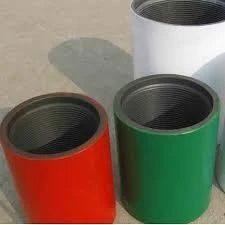2 月 . 01, 2025 00:59
Back to list
what is a pup joint
In the oil and gas industry, precision and reliability are non-negotiable. Amidst the complex apparatus required for drilling operations, the role of a seemingly simple component, known as a pup joint, becomes essential. Understanding what a pup joint is and how it contributes to successful drilling operations not only enhances operational efficiency but also ensures safety, boosting your industry's credibility.
Another advantage of using pup joints is their adaptability. They can be easily integrated into existing drill strings, providing versatility that is highly valued in dynamic field conditions. Whether compensating for unexpected geological formations or optimizing drilling parameters, pup joints ensure that operators can maintain control and adaptability. This flexibility is further enhanced by the availability of pup joints in various threaded connections, such as API threads or premium connections, which are selected based on compatibility with existing equipment, further underlining their expertise in the field. In terms of quality assurance, adherence to stringent manufacturing standards is paramount when producing pup joints. The American Petroleum Institute (API) provides guidelines that must be followed to ensure products are up to industry standards. These guidelines cover aspects such as material specifications, dimensions, and performance standards, assuring operators of the pup joints' reliability. Manufacturers that meet or exceed these standards establish themselves as authoritative sources within the industry, earning the trust of operators and engineers globally. Pup joints also play a critical role in maintenance and repair operations. During maintenance, it may be necessary to temporarily replace a section of the drill string. Pup joints can serve as placeholders or extensions, allowing maintenance without the need for custom components. In addition, their use in repair operations reinforces operational safety and reduces downtime—a critical factor in maintaining trust and reliability in drilling operations. In conclusion, the strategic use of pup joints in drilling operations exemplifies the synergy between precision engineering and operational efficiency. As a crucial component designed to leverage adaptability, durability, and precision, pup joints are indispensable in modern drilling operations. Their utility spans the entire lifecycle of a drilling project—from initial assembly to maintenance and repair—highlighting their role as essential assets in the industry. By ensuring the selection of high-quality, standard-compliant pup joints, operators and engineers fortify the backbone of their drilling endeavors, thereby enhancing their credibility and reputation across the oil and gas sector.


Another advantage of using pup joints is their adaptability. They can be easily integrated into existing drill strings, providing versatility that is highly valued in dynamic field conditions. Whether compensating for unexpected geological formations or optimizing drilling parameters, pup joints ensure that operators can maintain control and adaptability. This flexibility is further enhanced by the availability of pup joints in various threaded connections, such as API threads or premium connections, which are selected based on compatibility with existing equipment, further underlining their expertise in the field. In terms of quality assurance, adherence to stringent manufacturing standards is paramount when producing pup joints. The American Petroleum Institute (API) provides guidelines that must be followed to ensure products are up to industry standards. These guidelines cover aspects such as material specifications, dimensions, and performance standards, assuring operators of the pup joints' reliability. Manufacturers that meet or exceed these standards establish themselves as authoritative sources within the industry, earning the trust of operators and engineers globally. Pup joints also play a critical role in maintenance and repair operations. During maintenance, it may be necessary to temporarily replace a section of the drill string. Pup joints can serve as placeholders or extensions, allowing maintenance without the need for custom components. In addition, their use in repair operations reinforces operational safety and reduces downtime—a critical factor in maintaining trust and reliability in drilling operations. In conclusion, the strategic use of pup joints in drilling operations exemplifies the synergy between precision engineering and operational efficiency. As a crucial component designed to leverage adaptability, durability, and precision, pup joints are indispensable in modern drilling operations. Their utility spans the entire lifecycle of a drilling project—from initial assembly to maintenance and repair—highlighting their role as essential assets in the industry. By ensuring the selection of high-quality, standard-compliant pup joints, operators and engineers fortify the backbone of their drilling endeavors, thereby enhancing their credibility and reputation across the oil and gas sector.
Next:
Latest news
-
Unlock the Benefits of Pup Joints for Your OperationsNewsOct.31,2024
-
The Quality of Casing Couplings from ChinaNewsOct.31,2024
-
The Essential Role of Pup Joints in Drilling OperationsNewsOct.31,2024
-
The Benefits of Tubing Couplings for Your ProjectsNewsOct.31,2024
-
Enhance Your Drilling Operations with Tubing Pup JointsNewsOct.31,2024
-
Elevate Your Drilling Operations with Tubing CrossoversNewsOct.31,2024
Related Products







